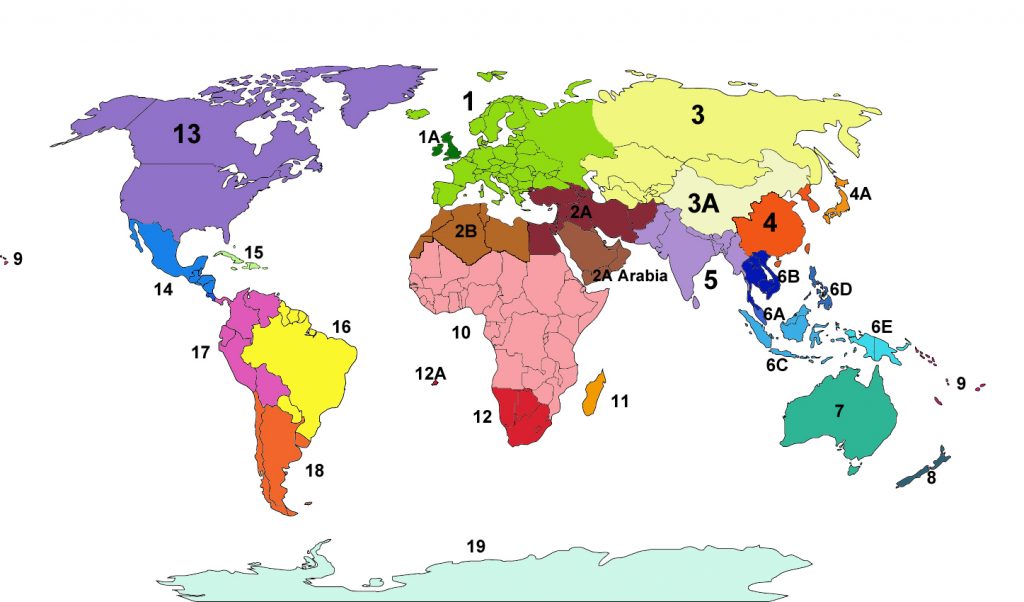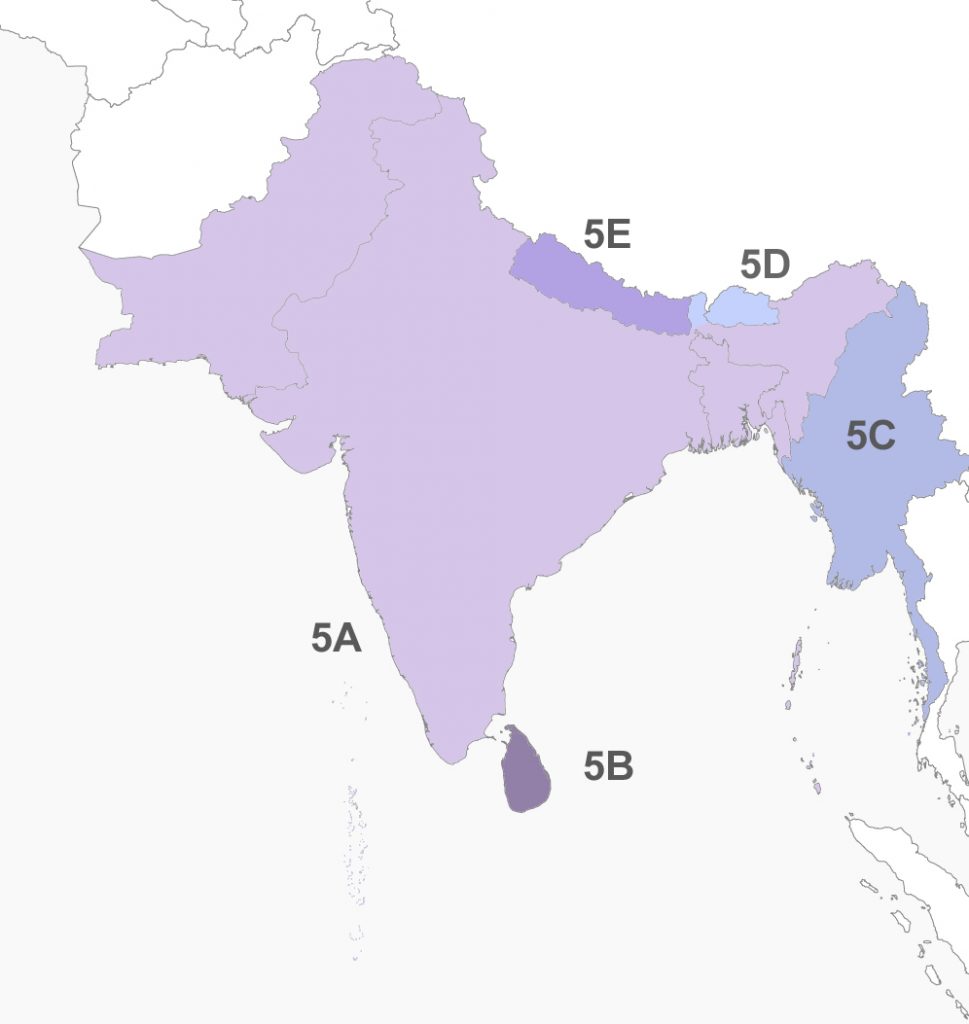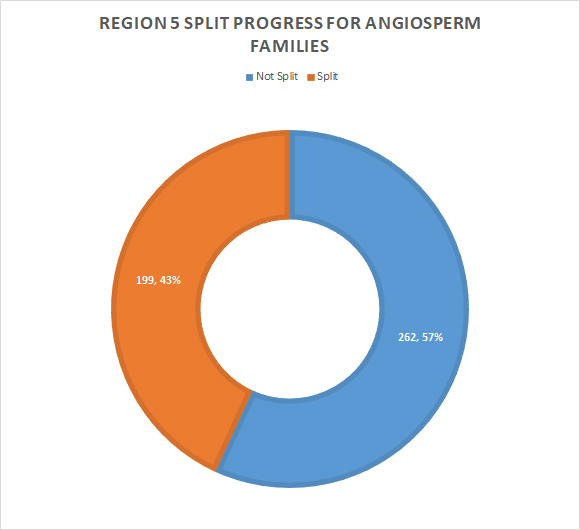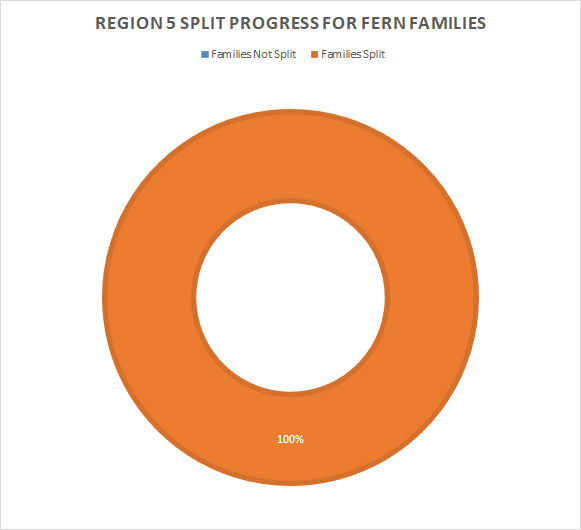A herbarium is a collection of preserved plants (known as specimens) stored, catalogued and arranged systematically. The specimens that are stored in the herbarium are a working reference collection used in the identification of plant species, the writing of Floras (a description of all the plant species in a country or region), Monographs (a description of plants within a taxonomic group, such as a plant family) and the study of plant evolutionary relationships. This fundamental research provides an essential baseline for other plant research. We need to know what species exist, how many individuals of each there are, and where they are distributed before we can conserve them.
Herbaria organise their collections into floristically meaningful geographical regions from which they were collected. RBGE has split the globe into 19 regions (within which some of these have further subdivisions).

Traditionally at RBGE region 5 has included Pakistan, India, Nepal, Bangladesh, Bhutan, Myanmar, Sri Lanka and the Maldives. At present this area contains over 400,000 specimens. Creating subdivisions within region 5 make the specimens easier to access for researchers.
We are currently spliting region 5 into 5 subdivisions:

Asia with Countries – Outline by FreeVectorMaps.com
- 5A India, Bangladesh, Pakistan, Assam, Andaman Islands and the Maldives
- 5B Sri Lanka (Ceylon
- 5C Myanmar (Burma)
- 5D Bhutan, Sikkim and Darjeeling
- 5E Nepal
These divisions will facilitate our current research on the Floras of Nepal and Myanmar. As well as assisting our current research programmes, region 5D helps align specimens into a floristic geographical region that matches up with the Flora of Bhutan, completed by RBGE staff in 2002.
This recuration project started in 2015 and has been carried out predominantly by Herbarium volunteers with staff focusing on the more complicated areas of the herbarium such as the Ericaceae, the family containing the Rhododendrons.
Here’s our splitting progress so far…

43% of the flowering plant families have been split into the new subdivisions

100% of the ferns families have been split into the new subdivisions
With such a huge task its important to celebrate milestones along the way with cake!

A big thank you to the 15 volunteers who have given their time to make this progress possible!

Alison Colwell
This project turned out to be a fascinating volunteer experience, as most of the RBGE collections from South Asia come from the early days of plant collecting in the region, with many famous names turning up on specimens. I had no prior experience with this part of the planet, and cross-referencing 19th century place names, often spelled phonetically in stylized handwriting, with modern place names was the trickiest part of the work. Participating in this project provided me an unusual portal into the biodiversity, geography and history of this region, for which I am grateful.
Sally King
Thanks for sharing your experience of the project Alison, very much appreciated!
We miss having you in the herbarium,
Sally
Herbarium Volunteer Coordinator